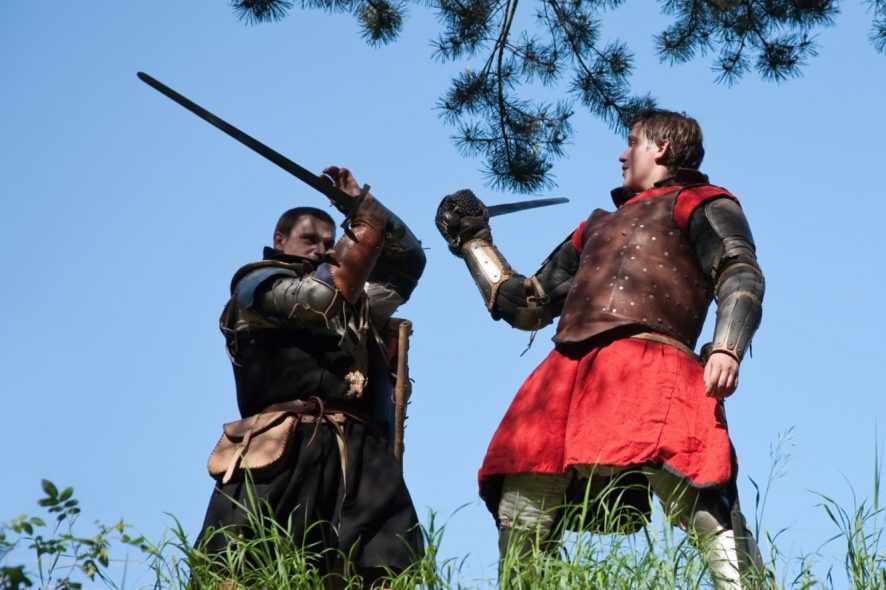Lord Kelyng, J., while distinguishing the offence of manslaughter from murder, held the accused guilty for the offence of murder acknowledging the element of ‘malice’
Brief Facts
The accused, Mr. John Mawgridge was invited by the deceased Mr. Cope, Lieutenant of the Queen’s guard in the Tower, and the principal officer commanding there. During the exchange of hot words between the accused and a woman present in the room, Mr. Cope intervened and warned the accused to mind his conduct. Subsequently, the accused lost his temper and assaulted Mr. Cope, with a sword, on the left part of his chest, striking and piercing through, thereby mortally wounding him. Fatefully, Mr. Cope succumbed to his death. The accused pleaded not guilty on the charge of murder and hence the present trial.
Issue
- Whether the accused in the present case committed murder or manslaughter?
- Whether the act committed is protected by any exception to murder?
Decision
Convicting the accused for murder, the Court observed that there is an express malice in the nature and manner of Mawgridge throwing the bottle and drawing his sword thereupon. An intention accompanied by a well-designed act is reflected which cannot diminish or find any alteration to by the act of Mr. Cope. In no case, can the Court believe the present act of brutality to be something of so low a degree as manslaughter. The Court further made a significant distinction between, Envy, hatred and malice, stating;
- Envy is repining or being grieved at the happiness and prosperity of another, invidus alterius rebus macrescit opimis.
- Hatred, which is odium, is a settled mind of one towards another, leveling upto several degrees. It may arrive to so high a degree that it provokes a man against whom the feeling of hatred exist, though not being a perpetrator himself.
- Malice is a design formed of doing mischief to another and he who designs or uses the means to do ill, is malicious.
Further, the Court enumerated certain rules to identify the offence of manslaughter by illustrations;
- If a man upon angry words shall make an assault upon another, either by pulling him by nose, or filliping upon the forehead, and he that is so assaulted that he draws his sword, and immediately run the other through, that is but manslaughter.
- Secondly, if a man’s friend be assaulted by another or engaged in a quarrel that comes to blows, and he in the vindication of his friend, shall on a sudden take up a mischievous instrument and kill his friend’s adversary, that shall be manslaughter.
- Thirdly, if a man perceives another by force to be injuriously treated, pressed or restrained of his liberty and though the person abused does not complain or call for aid or assistance, the others out of compassion come to his rescue and kill any of those who so restrain him, shall be called a manslaughter.
- Fourthly, when a man is stabbed for adultery against the other man’s wife, it shall be considered a case of manslaughter.
Relied/referred judgments and rules
- Grey’s Case, 18 Car. 2, In this case, the master (Mr. Grey), in anger, struck an iron bar upon the head of his servant (Mr. B), against which the latter succumbed to death. Noticeably, there was an element of alleged provocation by the servant but the Court decided it as murder, observing that even if it is accepted that the negligent act of the servant was a provocative factor, the degree of retaliation was heavily too violent, disproportionate and reflective of malice.
- Clement against Sir Charles Blunt; Clement, in the instant case, had promised a dog to Sir Charles Blunt and being requested accordingly, refused and beat the dog home to his house. Mr. Blunt fetched his sword and came to Clement’s house for the dog. Clement stood at the door and refused his entry. Blunt thereupon killed Clement. The jury held his act to be of
- Buckner’s case; Buckner was indebted and B, C came to his chamber upon the account of his creditor to demand the unpaid sum of money. B took a sword that hung up and was in the scabbard, stood at the door with it in his hand undrawn, to keep the debtor in until they could send for a bailiff to arrest him. The debtor, in consequence, took out a dagger which he had in his pocket, and stabbed B. It was held to be a case of manslaughter, for the debtor was insulted and restrained from any movement, without any process of law and though within the words of the Statute of Stabbing, yet not within the reason of it.
[Regina v. Mawgridge, 84 ER 1107 (1707)]






